Artist: Gerard Dillon RHA RUA (1916-1971) Title: Man and Accordion, Connemara Signature: signed lower left Medium: oil on board Size: 38½ x 32cm (15.2 x 12.6in) Framed Size: 62.2 x 55.5cm (24.5 x 21.9in) Provenance: Dawson Gallery, Dublin (label verso); Sotheby's, London, 21st October 2015, Lot 25; Private Collection a#morebtn { color: #de1d01; } a#morebtn:hover { cursor: pointer;} Dressed in an Aran Island, or Achill Islander's costume of sheepskin jerkin over a woollen pullover, green trousers and laced boots, the black-haired boy is playing his small square accordion while sitting on a little bench. He is seating inside a cottage, with the blue-painted door open behind hi... Read more Dressed in an Aran Island, or Achill Islander's costume of sheepskin jerkin over a woollen pullover, green trousers and laced boots, the black-haired boy is playing his small square accordion while sitting on a little bench. He is seating inside a cottage, with the blue-painted door open behind him. Outside the cottage, chickens peck at the ground, wandering in and out of a small thatched whitewashed stone building that serves as a hen house. In the distance, over a stone wall, can be seen the blue sea, an island or peninsula in the distance and a blue sky. There is also a deeper level in this work of art. Dillon's paintings often reveal the inner loneliness and angst that had been a part of his life since childhood in Belfast. Leaving school at the age of fourteen, he initially trained as a house painter. While studying to become a full-time artist, he also worked in the building trade to earn a living. Although he did not attend art college, his work was acknowledged and championed, particularly by his fellow-artist Mainie Jellett. During the 1930s and '40s, Dillon lived for extended periods in London, but he spent the war years in Dublin where, in 1942, Mainie Jellett opened his first exhibition. Dillon's friendships with artists such as Daniel O'Neill George Campbell and Nano Reid were important to him, and in the 1950s he enjoyed a considerable degree of success, showing at the Waddington and Leicester galleries and having a one-person show at the Whitechapel Art Gallery in 1963. He represented Ireland at the Guggenheim International in 1958 and that same year, notwithstanding his Irish nationalist sympathies, represented Great Britain at the Pittsburgh International. Dillon died prematurely in 1971, of a congenital heart condition that had already claimed the life of his three brothers. He travelled in Europe and taught for brief periods in London. In 1968 he was in Dublin, designing sets and costumes for Sean O'Casey's play Juno and the Paycock. Peter Murray, September 2019
Artist: Gerard Dillon RHA RUA (1916-1971) Title: Man and Accordion, Connemara Signature: signed lower left Medium: oil on board Size: 38½ x 32cm (15.2 x 12.6in) Framed Size: 62.2 x 55.5cm (24.5 x 21.9in) Provenance: Dawson Gallery, Dublin (label verso); Sotheby's, London, 21st October 2015, Lot 25; Private Collection a#morebtn { color: #de1d01; } a#morebtn:hover { cursor: pointer;} Dressed in an Aran Island, or Achill Islander's costume of sheepskin jerkin over a woollen pullover, green trousers and laced boots, the black-haired boy is playing his small square accordion while sitting on a little bench. He is seating inside a cottage, with the blue-painted door open behind hi... Read more Dressed in an Aran Island, or Achill Islander's costume of sheepskin jerkin over a woollen pullover, green trousers and laced boots, the black-haired boy is playing his small square accordion while sitting on a little bench. He is seating inside a cottage, with the blue-painted door open behind him. Outside the cottage, chickens peck at the ground, wandering in and out of a small thatched whitewashed stone building that serves as a hen house. In the distance, over a stone wall, can be seen the blue sea, an island or peninsula in the distance and a blue sky. There is also a deeper level in this work of art. Dillon's paintings often reveal the inner loneliness and angst that had been a part of his life since childhood in Belfast. Leaving school at the age of fourteen, he initially trained as a house painter. While studying to become a full-time artist, he also worked in the building trade to earn a living. Although he did not attend art college, his work was acknowledged and championed, particularly by his fellow-artist Mainie Jellett. During the 1930s and '40s, Dillon lived for extended periods in London, but he spent the war years in Dublin where, in 1942, Mainie Jellett opened his first exhibition. Dillon's friendships with artists such as Daniel O'Neill George Campbell and Nano Reid were important to him, and in the 1950s he enjoyed a considerable degree of success, showing at the Waddington and Leicester galleries and having a one-person show at the Whitechapel Art Gallery in 1963. He represented Ireland at the Guggenheim International in 1958 and that same year, notwithstanding his Irish nationalist sympathies, represented Great Britain at the Pittsburgh International. Dillon died prematurely in 1971, of a congenital heart condition that had already claimed the life of his three brothers. He travelled in Europe and taught for brief periods in London. In 1968 he was in Dublin, designing sets and costumes for Sean O'Casey's play Juno and the Paycock. Peter Murray, September 2019
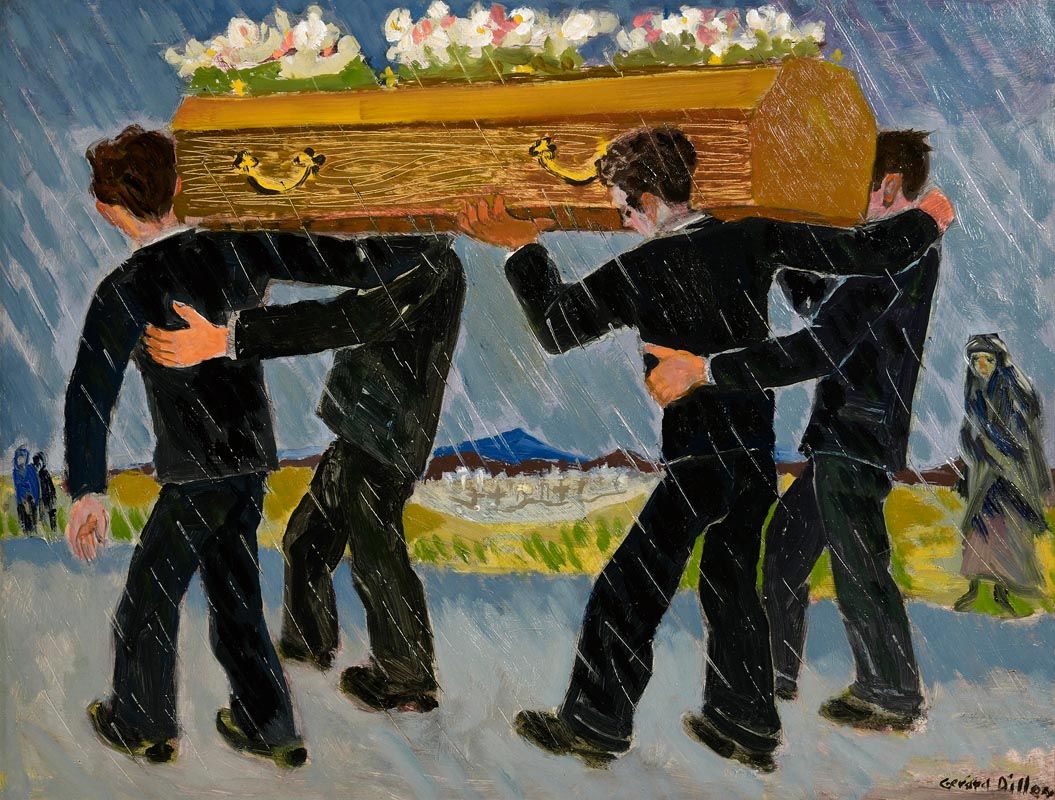
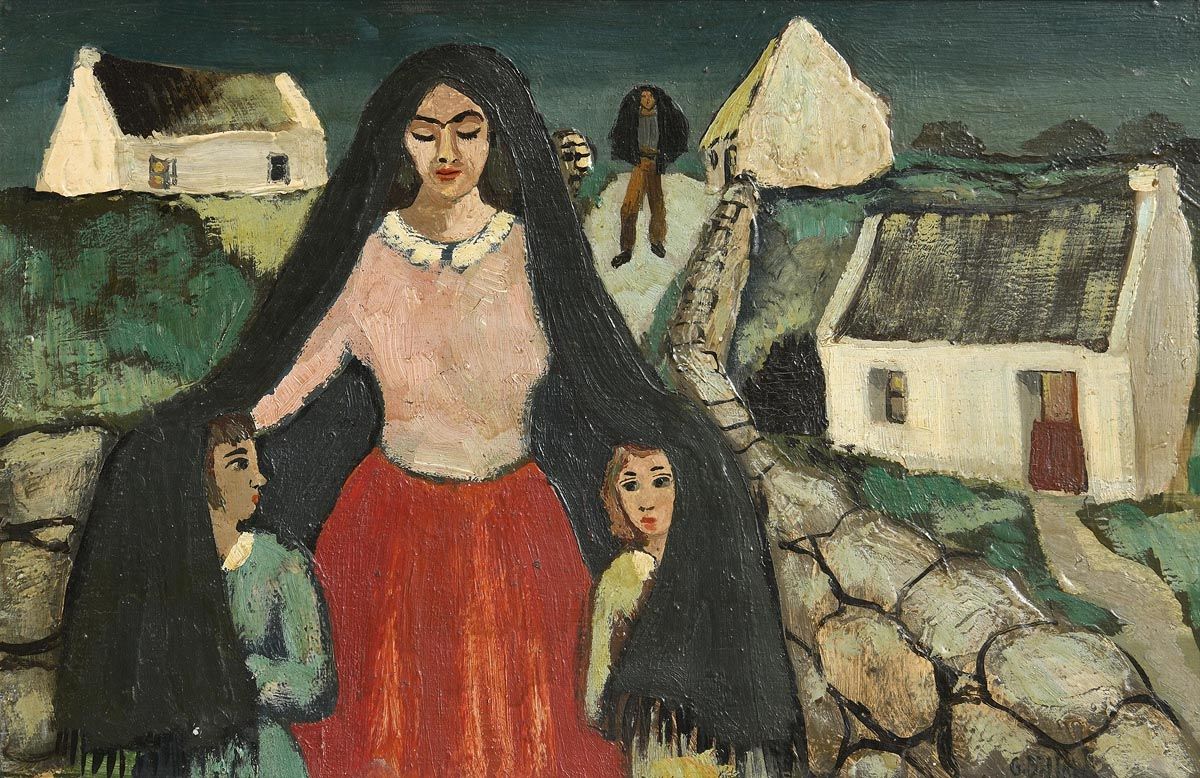
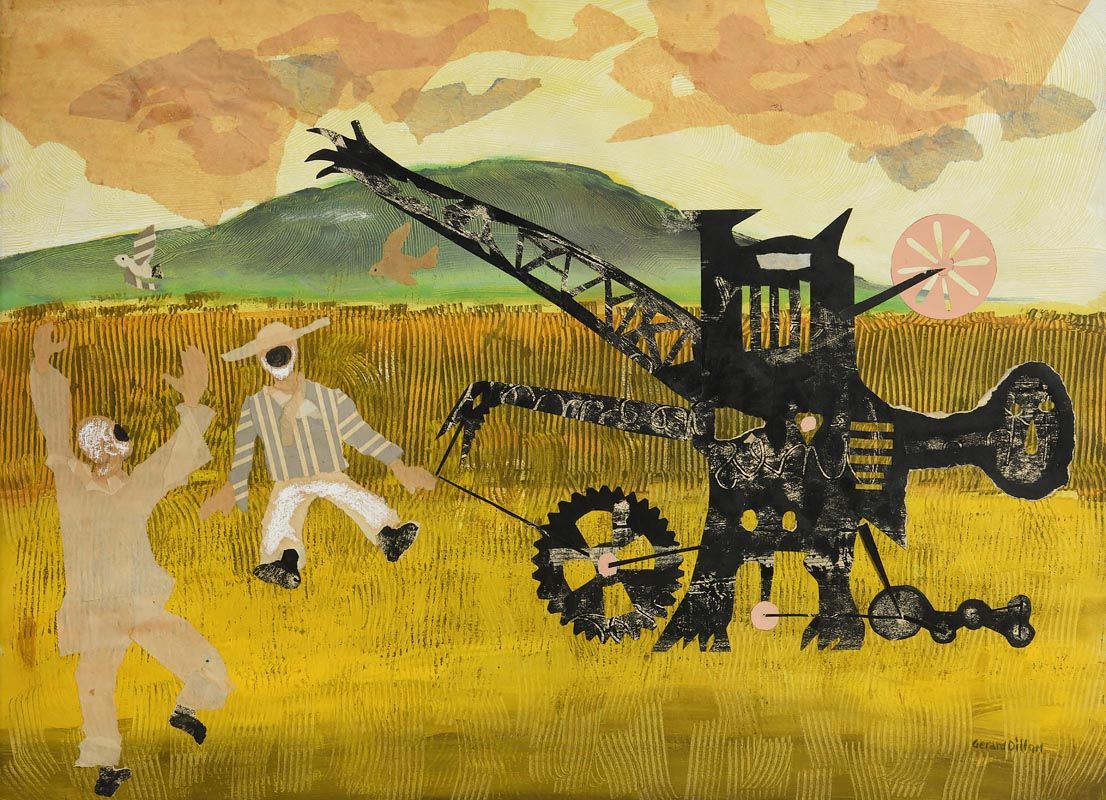
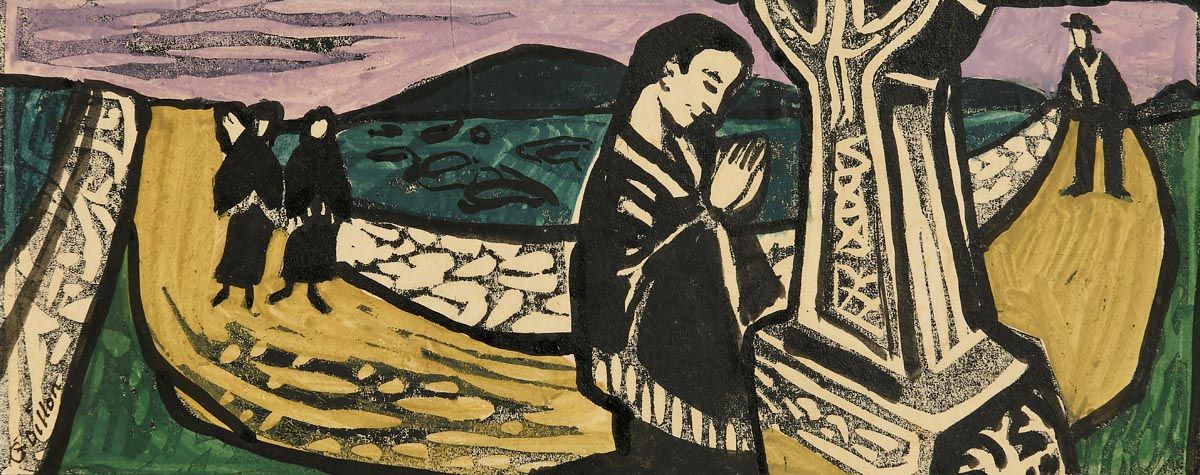
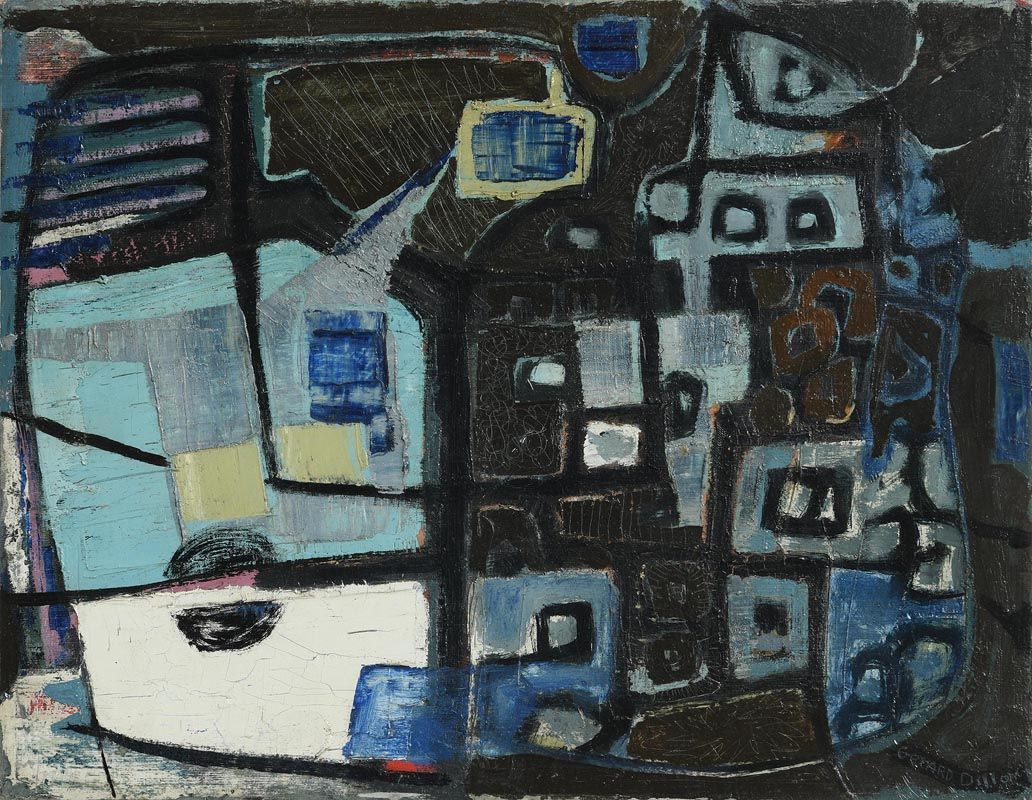
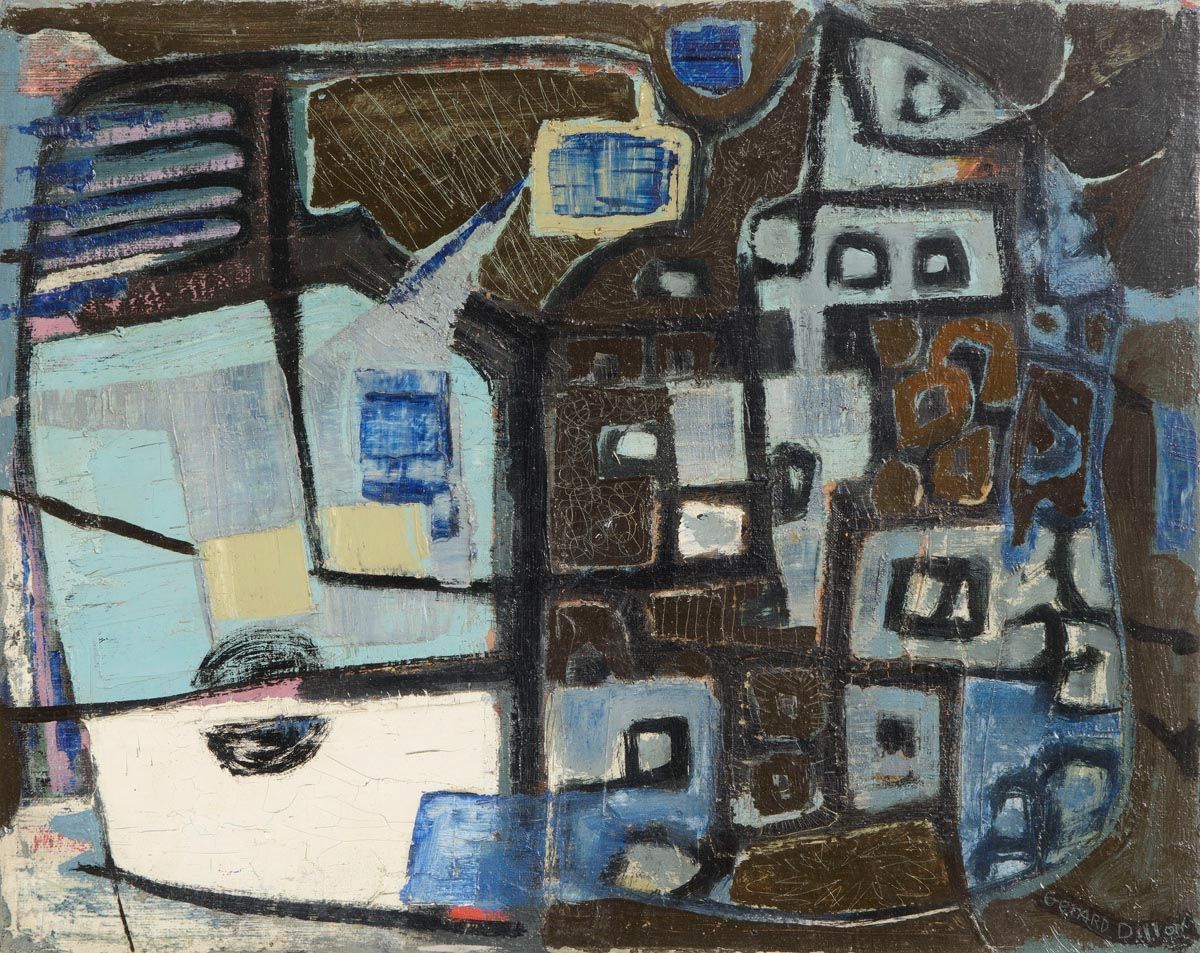
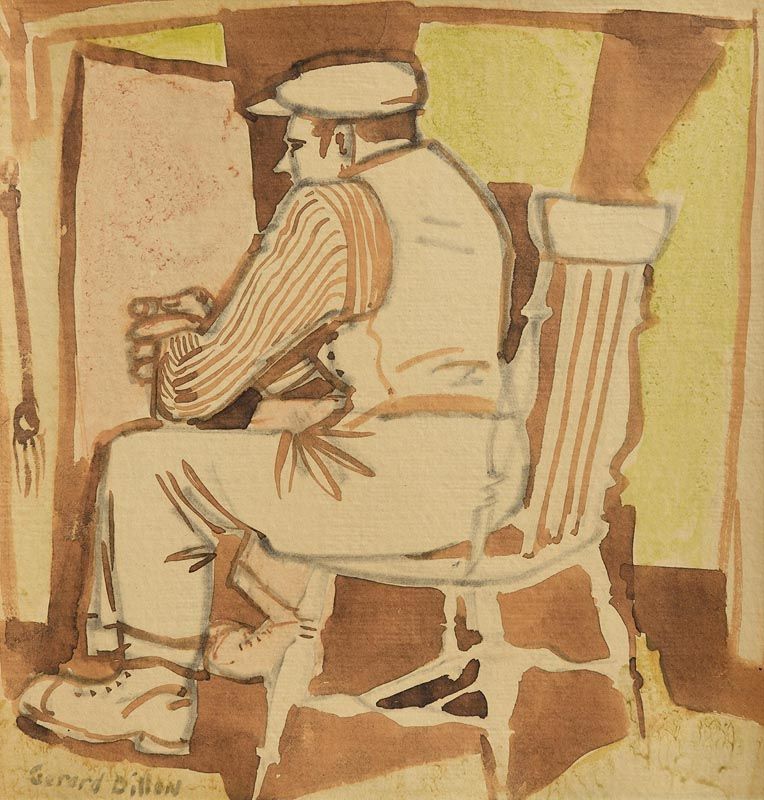
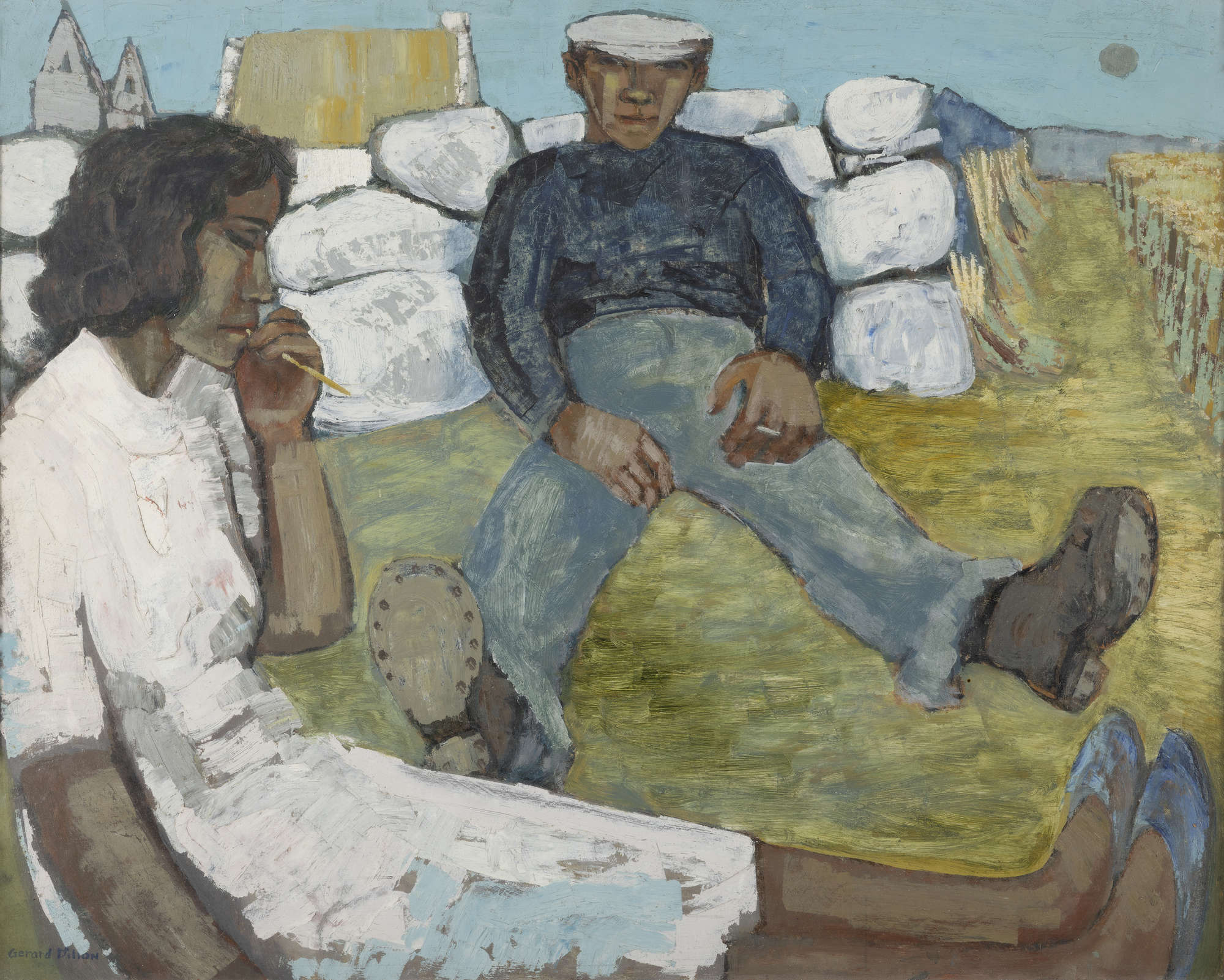
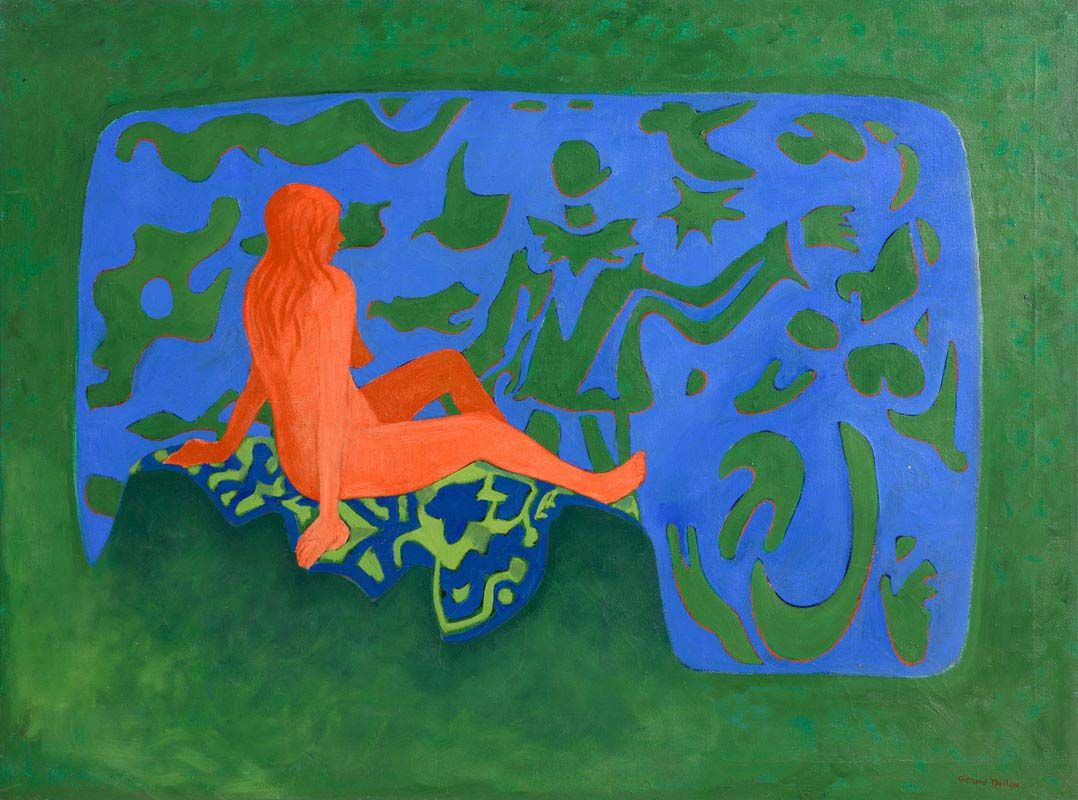
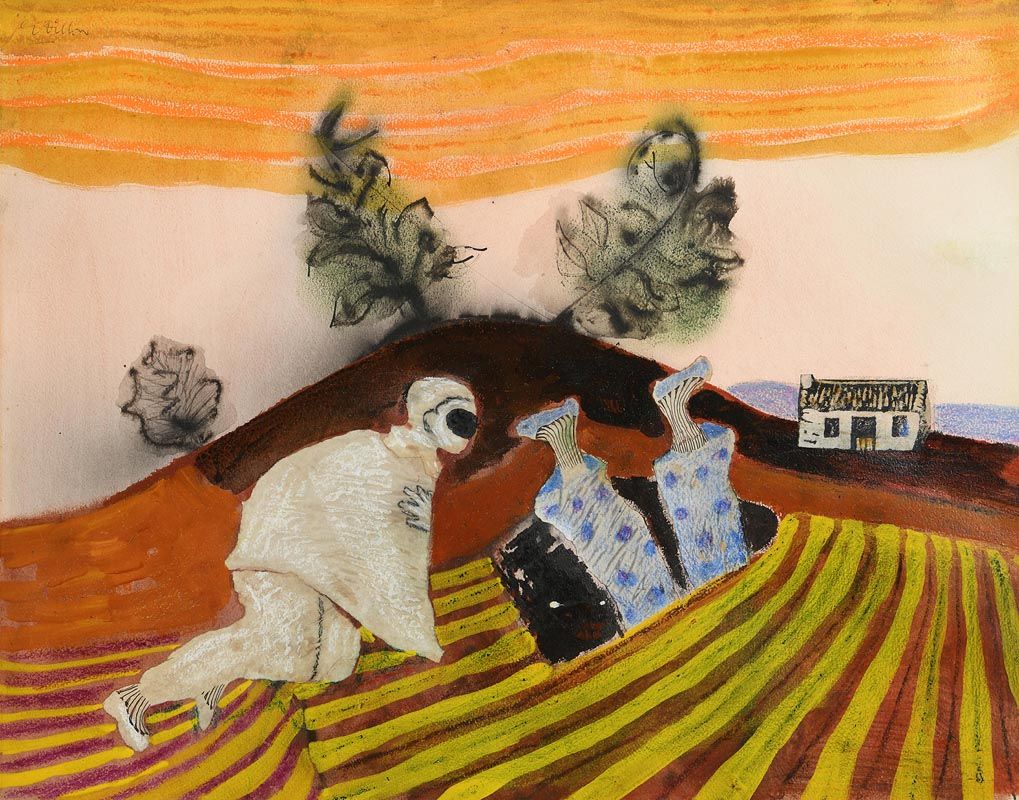
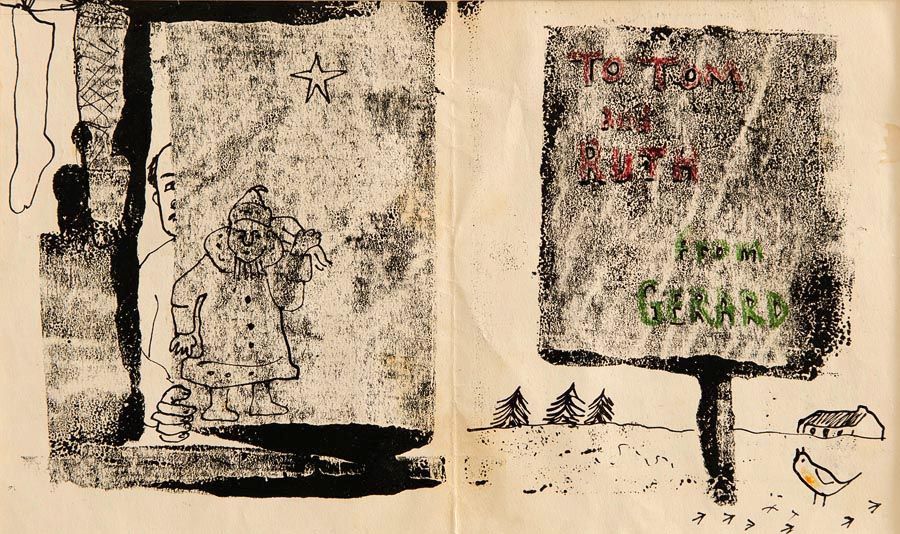
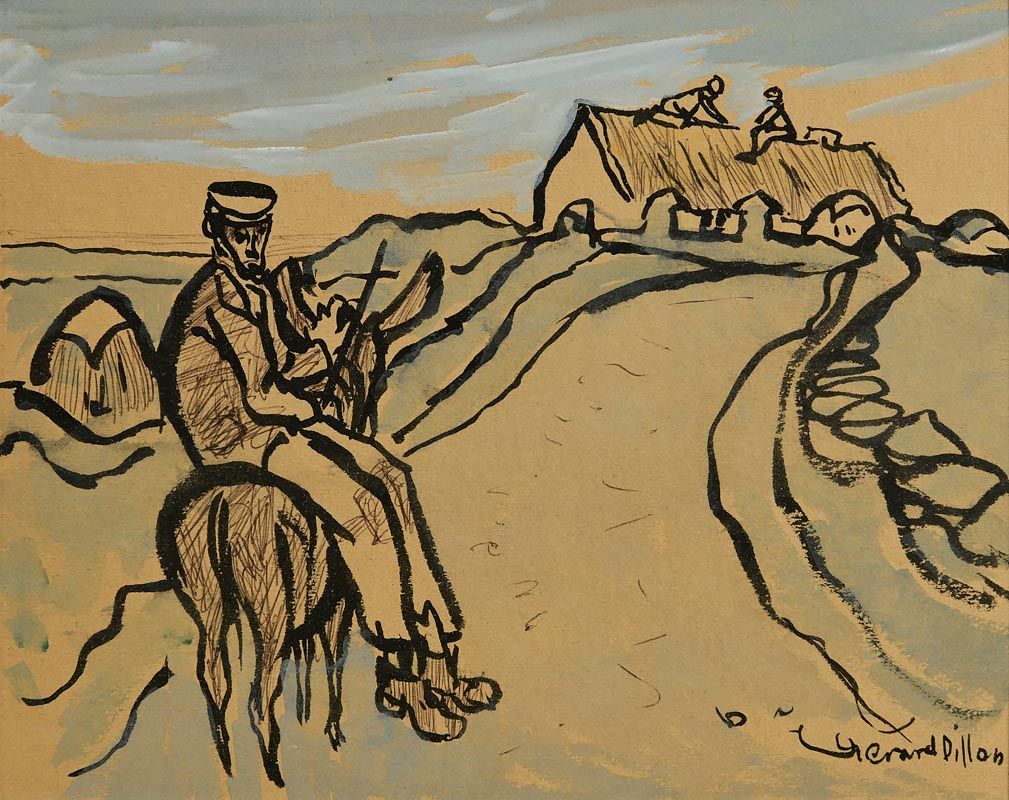
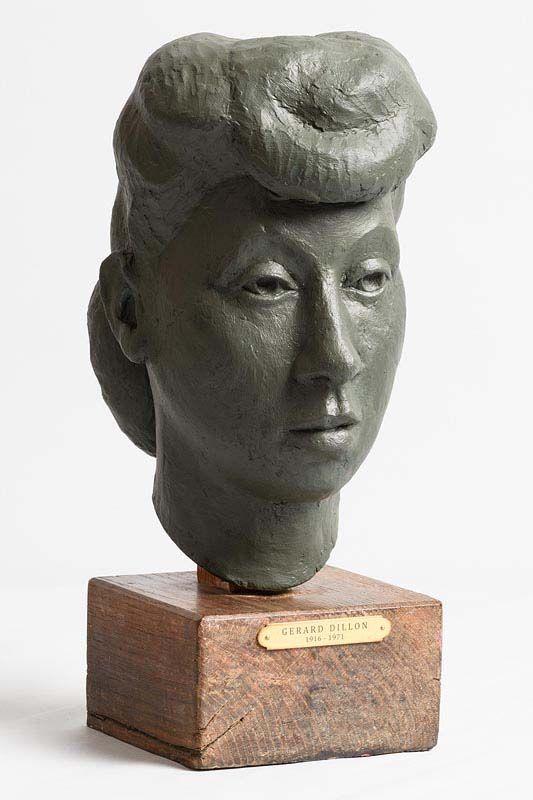
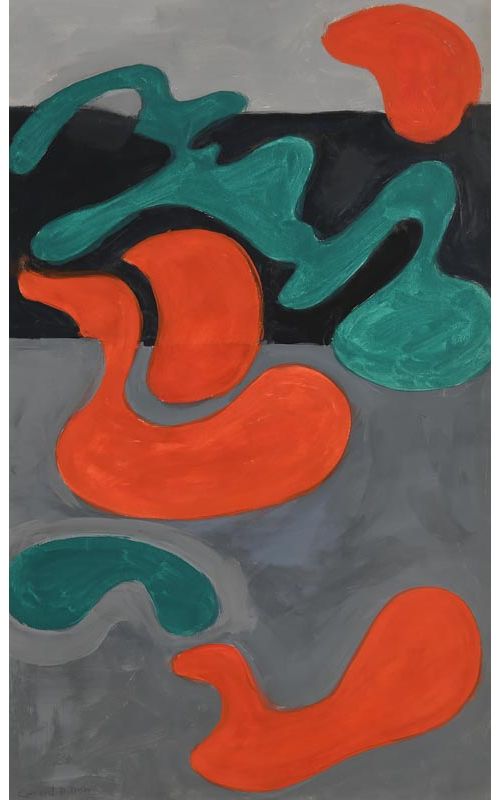
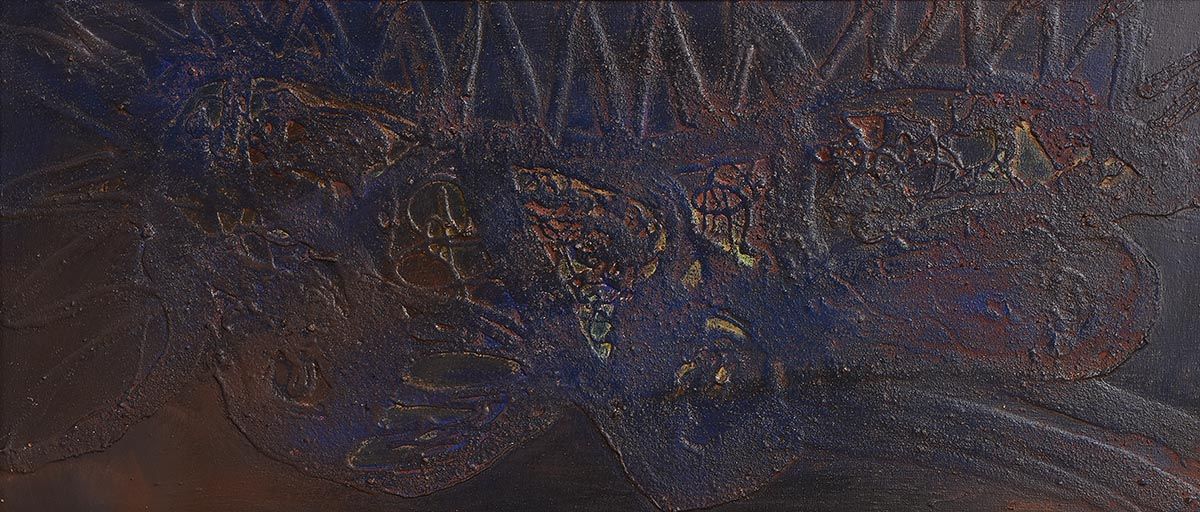
Testen Sie LotSearch und seine Premium-Features 7 Tage - ohne Kosten!
Lassen Sie sich automatisch über neue Objekte in kommenden Auktionen benachrichtigen.
Suchauftrag anlegen